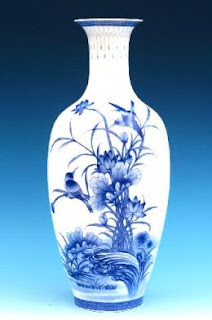High Fire Grollegg Porcelain
When our class was introduced to testing different clay bodies, I knew right away that I wanted to play with a very white clay body. My professor Paul Donnelly gave me a couple of different recipes that contained high amounts of grollegg. I ended up choosing Babu's porcelain and testing that. It was more difficult to throw and trim with but it was extremely hard to pull handles with because of it's plasticity. After taking mixing up a slip slurry of it and letting it dry on plaster it was a lot easier to pull handles with.
High Fire Black Stoneware
The second clay body I tested was a black stoneware. I mixed up a one pound slurry of slip and laid it out on plaster until it was firm enough to wedge up and throw. This was by far the best all around clay body I have ever worked with. It looks like dark chochlate when you are throwing with it and it fires beautifully with just a clear glaze over it such as Hensley Clear.

Flint Hills High Fire Stoneware
The last clay body I worked with was from Flint Hills Clay and it was just their high fire stoneware. This clay body reminded me of other stoneware's I have used in the past. It works really nice to throw with and it is not that firm so it easy to wedge large amounts. It is a very strong clay body so it makes it easy to trim a lot off when leather hard. This clay body is also quite beautifiul with just a clear glaze over it and looks even better with black under glaze designs if applied in the correct amount.









